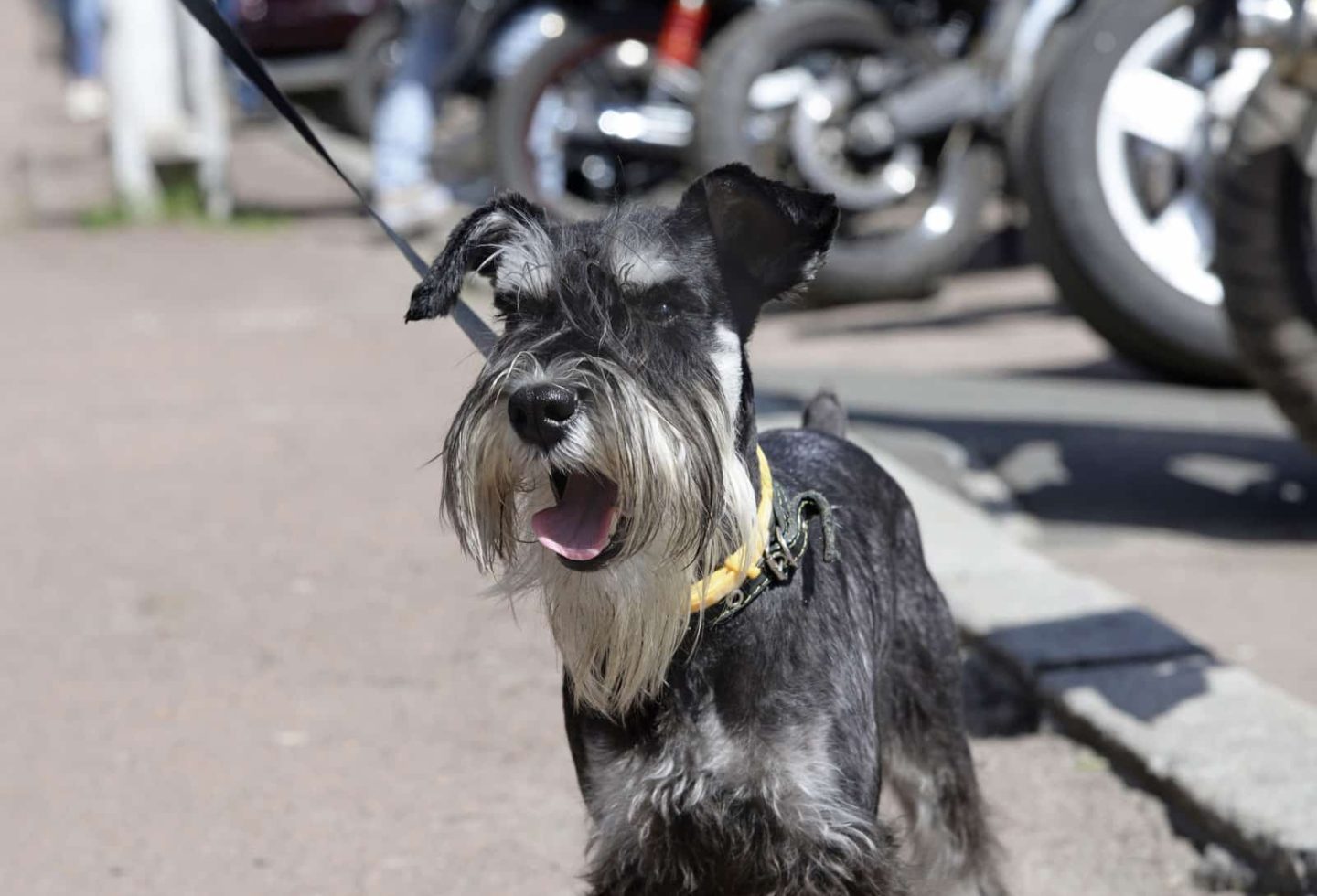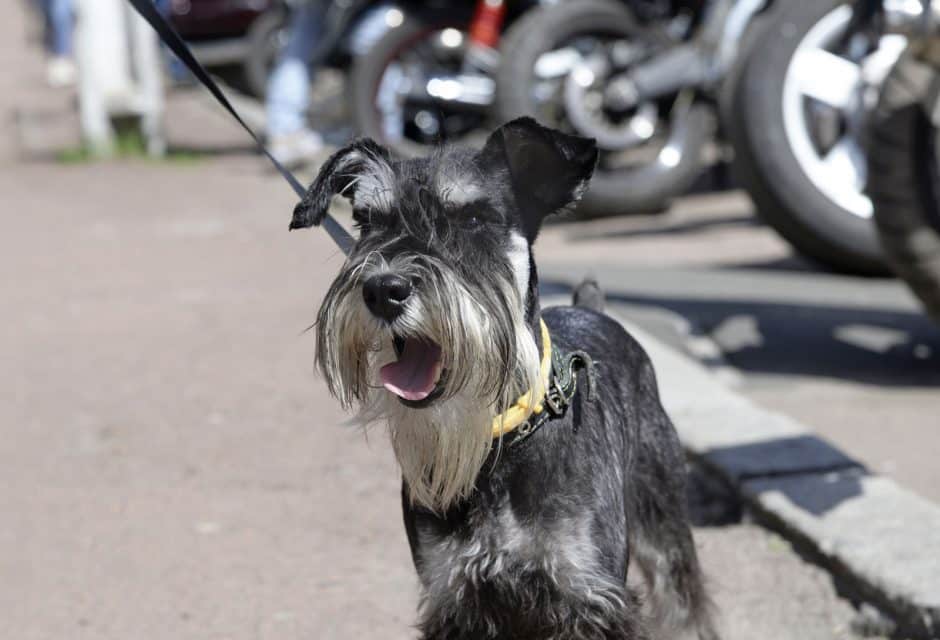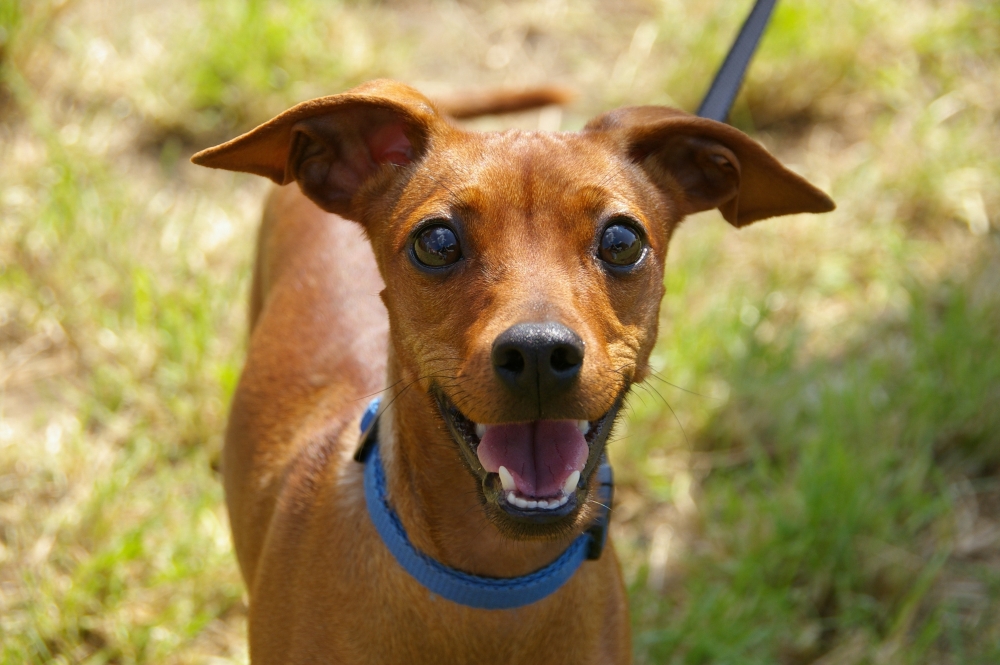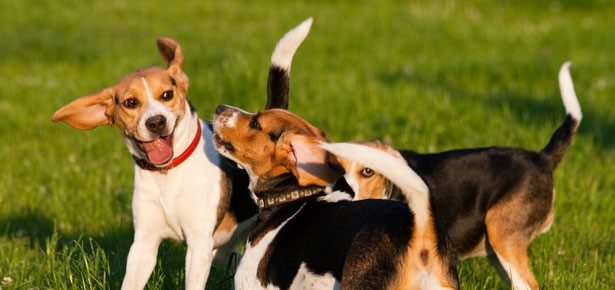

The Beast at the End of the Leash
Does your leashed dog go crazy when he encounters other canines? This is called “leash reactivity.” Here’s what to do about it.
Your dog goes to doggie daycare a couple times a week and has a grand time. He plays well with dogs big and small, and the staff love him. Every couple weeks your friends come over to your place with their dogs and your dog has a blast playing with his buddies. Attach your social dog to a leash, however, and he becomes a lunatic.

When a dog is aggressive primarily when on leash, this is called “leash reactivity.” People are often confused when their usually friendly dog, a saint around other dogs when off leash, becomes a completely different beast when tethered. It’s not uncommon, however.
Some dogs get this way because they don’t deal with frustration very well. This is especially true of adolescent dogs. If your dog gets to play with other dogs a lot throughout the week, but then you won’t allow him to go see another dog when he’s on leash, it can be confusing. He wants to say hello to the other dog but you won’t let him, and he may not have good enough coping skills to deal with the frustration very well. This does not mean you should let him run up to every dog you meet! This won’t help the problem. Instead, you’ll be rewarding his bad behaviour by giving him the paycheck of going to greet the other dog.
Sometimes, the problem can be created by the type of equipment you use to walk your dog. For example, if you use a prong collar to control your leash puller, the collar constricts sharply around your dog’s neck when he pulls—if he pulls to greet another dog, he gets corrected by the collar. Dogs start to associate other dogs with the correction. In essence, you may have accidentally taught your dog to not like the sight of other dogs. To avoid this backlash, try using a front-clip harness to walk your dog. [We like the Halti Harness, which steers your dog from his chest.—Ed]
Keeping Your Dog Cool and Focused
There are three main areas to work on when helping your Hyde control his aggressive impulses during walks—your relationship, his obedience, and finally, the aggression itself. You need to build a solid foundation in all three areas or you won’t make significant progress. Think of this approach as a three-legged stool. All three legs need to be the same size or you’ll just wobble.
You probably think you already have a great relationship with your dog. He loves you, you love him, right? But does he look to you for help? When he’s barking and lunging on leash, he’s not looking to you at all. He probably acts like he can’t even hear you. If you want to make him better, you need to beef up your relationship so he starts looking to you for answers, rather than just acting on his own. One way to do this is hand feed him all his meals. This teaches him that you are the direct source for all his food. This is classical conditioning: building associations. Hand goes towards dog and dog receives delicious food, therefore dog loves your hand coming near him. You give him food and he loves food, therefore you are awesome.
1. Obedience is critical

2. Keep Treats Handy

3. His aggression is the final area to address

If your dog barks and lunges, you are too close to the other dog. Back up until he can calm down and focus on your training. This process can take just several sessions or quite some time to succeed, but be patient and diligent, and get professional help from a reward-based trainer if you need it.
Finally, please do not allow your dog to just go up and greet other dogs on leash if he is telling you that it’s not a good idea. If your reactive dog is lunging, has a stiff body posture, high flagging tail, fur raised on his shoulders, or is barking or whining, these are not really signs he wants to make friends. He’s actually telling you he is very stressed, and in turn, his behaviour could be stressing out the other dog as well. Your neighbours may not appreciate you allowing your dog to get in their dog’s space, so this will just add human tension to the interaction.
Leash reactivity is a frustrating and sometimes embarrassing problem. If your dog is really sweet off-leash, however, there is a good chance you can help him. Your furry monster can learn how to be a gentleman, both off leash and on.
Looking for more on dog behaviour? Learn how to solve your dog's most common behavioural problems!
Join the newsletter and never miss out on dog content again!
"*" indicates required fields
By clicking the arrow, you agree to our web Terms of Use and Privacy & Cookie Policy. Easy unsubscribe links are provided in every email.






